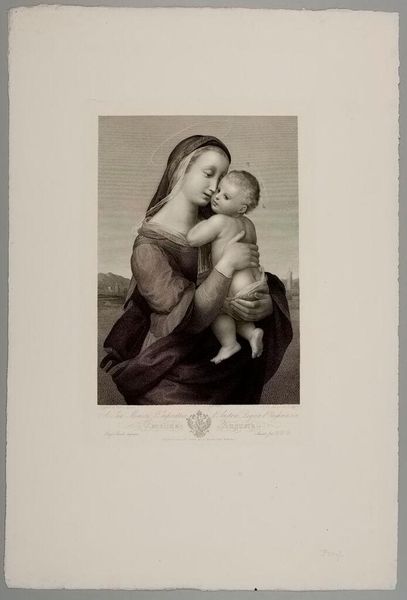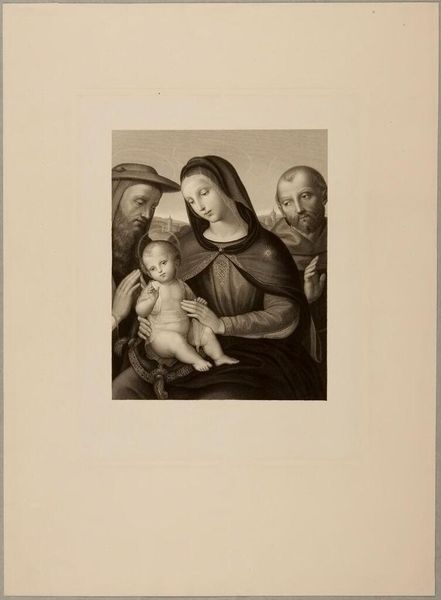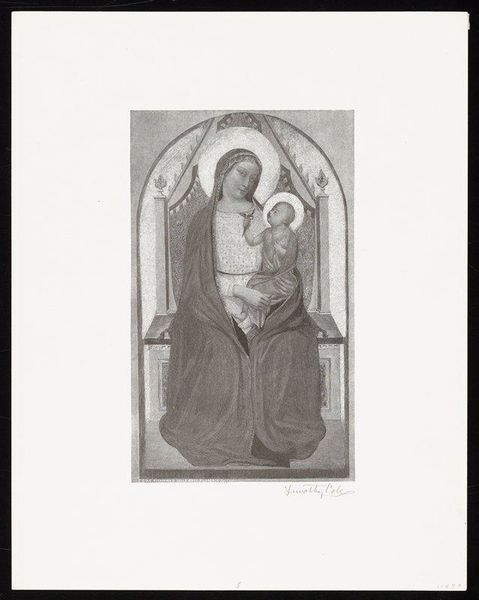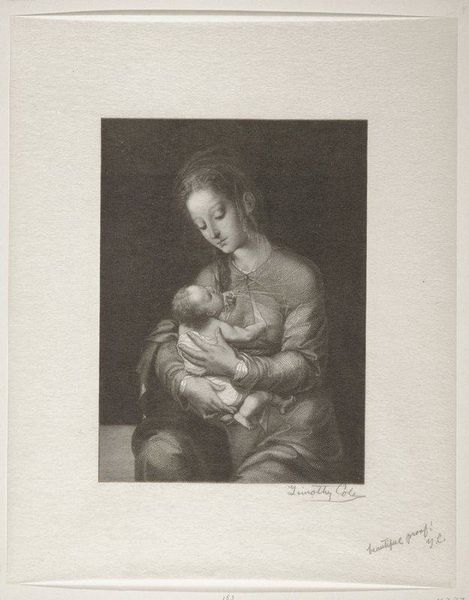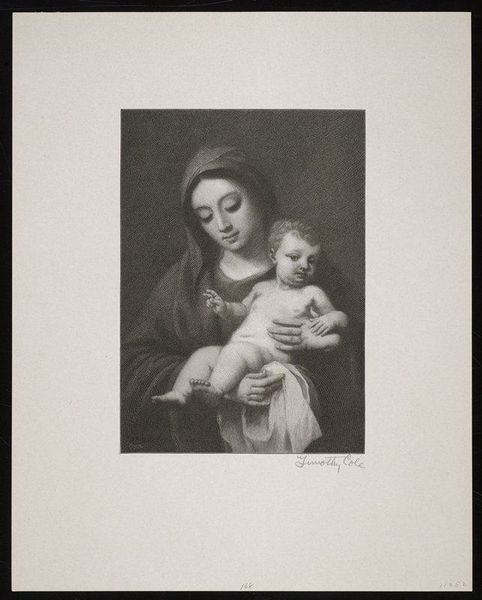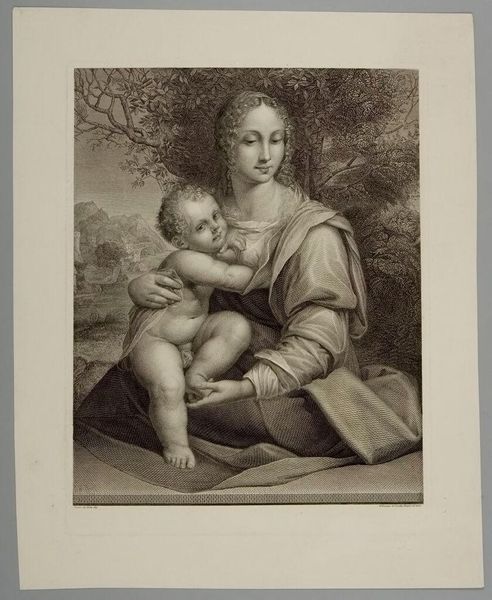
print, woodcut, wood-engraving
#
portrait
#
16_19th-century
#
neoclassicism
# print
#
figuration
#
woodcut
#
united-states
#
history-painting
#
academic-art
#
wood-engraving
Dimensions: 7 3/4 x 5 1/4 in. (19.69 x 13.34 cm) (image)12 x 9 1/2 in. (30.48 x 24.13 cm) (sheet)
Copyright: No Copyright - United States
Curator: Here we have Timothy Cole’s “Madonna and Child,” created in 1889. Cole was an American wood engraver known for his high-quality reproductions of Old Master paintings. This one is housed right here at the Minneapolis Institute of Art. Editor: It strikes me as… tender. The way the light falls, creating such soft gradations in the figures, is really quite lovely. It evokes a serene, almost timeless quality. Curator: Precisely. Cole was a master of his medium. Note the precise lines and delicate cross-hatching. Each stroke is deliberately placed to mimic the texture and tonal variations of a painted surface. Think about the labor involved in translating a painting into this detailed wood engraving! Editor: Yes, the process! We often forget the sheer physicality involved. The act of carving those intricate lines into the woodblock, reversing the image… that requires immense skill and control over the materials. You know, looking closely, one can see subtle impressions—variations in the ink—hints of the artisan's hand and the matrix from which the final work emerges. Curator: The formal composition contributes significantly to the work's impact. Consider the careful balance between light and shadow, the stable triangular arrangement of the figures within that arched, frame-like space... It’s a highly structured piece, but with moments of great intimacy in the details. Editor: I’m intrigued by the contrast of the haloes against the dark fabric of Madonna’s garments. There’s a deliberate tension between the flat pictorial plane of the background versus the depth Cole renders into the human figures. How much source painting did he manipulate? Curator: It's known he took some liberties to adjust contrast and amplify expressive qualities to compensate for the grayscale limitations compared to full-color. Cole sought not just mechanical accuracy, but a sense of vital presence through refined mark-making. Editor: Understanding all that craftsmanship makes it resonate all the more deeply. To think that the subtle play of light and shade originated in this act of meticulous labor. Curator: Indeed, it invites a closer consideration of how value is assigned to artworks when divorced from the context of that initial creation. It forces us to look not just at what’s represented, but at how that representation was achieved through tangible material processes. Editor: A truly rewarding piece on several levels, thank you.
Comments
No comments
Be the first to comment and join the conversation on the ultimate creative platform.

